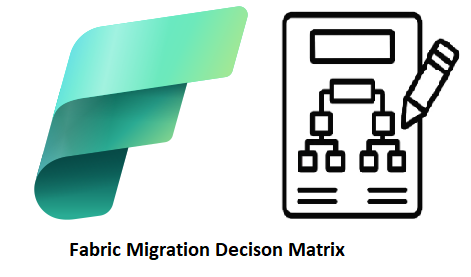🧭 Power BI Premium → Fabric Migration Decision Matrix
- gowheya
- Sep 12
- 3 min read
Updated: 2 days ago

It is not always an easy decision to make when migrating to Microsoft Fabric SaaS platform. This article aim to support your strategic decision making as well as cost benefit analysis. If you are currently thinking of which way to go, this article will help you.
Current State | Key Factors | Recommended Fabric SKU | Rationale / Notes |
Small org with <50 users, mostly PPU licenses | Low concurrent usage, small datasets (<1GB), limited refresh | ⚠️ Business case needed – F16 minimum | No direct PPU equivalent. If only a few users need Premium features, staying on PPU may be cheaper until Fabric adoption is strategic. Migration only if Fabric workloads (Lakehouse, Data Warehouse) are required. |
Org with 50–500 users on PPU | Growing adoption, multiple workspaces, moderate refreshes | F64 | Consolidates all PPU users under one Fabric capacity. Eliminates need for per-user licensing. Good entry point to adopt Fabric-native workloads. |
Premium P1 (8 vCores) | Enterprise workloads with scheduled refreshes, paginated reports, large semantic models (~10GB) | F64 | Direct equivalent in Fabric. Provides comparable performance, with flexibility to scale up if adoption grows. |
Premium P2 (16 vCores) | Higher concurrency (hundreds of users), larger semantic models (10–20GB), frequent refresh | F128 | Matches P2 performance. Fabric allows elastic growth if workloads expand into Lakehouse/Real-Time. |
Premium P3 (32 vCores) | Large enterprise with thousands of users, heavy refresh (near real-time), very large datasets | F256 or higher | Equivalent high-performance capacity. Fabric offers DirectLake for >100GB semantic models, plus Warehouse/Streaming workloads. |
Embedded (EM SKUs) | App-embedded analytics, customer-facing dashboards | F64+ | No EM equivalent in Fabric. Embedding now consumes Fabric capacity, but unifies governance and monitoring under one SKU. |
Hybrid (Mix of PPU + P SKUs) | Combination of small PPU users + enterprise P capacity | Consolidate to F64/F128 depending on workload | Consolidates fragmented licensing into one Fabric tenant capacity, simplifies governance and cost model. |
🌟 Capacity Planning Guidance
Start with F64 for most migrations (equivalent to P1) unless heavy workloads demand more.
Scale up dynamically — Fabric allows scaling F64 → F128 → F256 without re-architecting.
Use auto-pause/scale where available to optimize costs.
Consider governance: consolidate scattered PPU users into one governed Fabric workspace.
Leverage DirectLake for very large semantic models (>100GB) to avoid dataset import bottlenecks.
⚖️ Decision Triggers for SKU Selection
✅ Choose F64 if:
You are migrating from PPU with <500 users OR P1 capacity.
Most reports are <10GB datasets.
Limited concurrency (<300 users simultaneously).
✅ Choose F128 if:
You are migrating from P2 capacity.
Reports exceed 10–20GB datasets.
Heavy concurrency (>500 users active).
✅ Choose F256+ if:
You are migrating from P3 or higher.
You run large-scale data models (>50GB) or real-time streaming.
Thousands of users need concurrent access.
💰 PPU vs Fabric F-SKU Cost Comparison
(Indicative pricing — adjust with your organisation’s Microsoft agreement as EA discounts may apply)
PPU License: ~$20 per user / month
Fabric F64 (≈P1 equivalent): ~$5,000 per month (capacity-based)
Fabric F128 (≈P2 equivalent): ~$10,000 per month
Fabric F256 (≈P3 equivalent): ~$20,000 per month
Want to use Microsoft pricing calculator?
1. Break-even Analysis
Scenario | PPU Cost | Fabric F64 Cost | Break-even Point |
100 users on PPU | $2,000 / month | $5,000 / month | PPU cheaper |
250 users on PPU | $5,000 / month | $5,000 / month | Break-even at ~250 users |
500 users on PPU | $10,000 / month | $5,000 / month | Fabric F64 is 50% cheaper |
1,000 users on PPU | $20,000 / month | $10,000 / month (F128) | Fabric saves 50%+ |
5,000 users on PPU | $100,000 / month | $20,000 / month (F256) | Fabric massively cheaper |
2. Strategic Considerations
Small Scale (<200 users)
PPU cheaper and simpler to manage if workloads are light.
Fabric only justified if you want access to Lakehouse, Warehouse, Real-Time Analytics.
Medium Scale (250–1,000 users)
Fabric F64 or F128 becomes cost-effective vs PPU.
Governance simplified (single capacity vs scattered PPU licenses).
Large Scale (1,000+ users)
Fabric offers massive cost savings compared to PPU.
Unlocks advanced workloads not possible on PPU.
3. Non-Cost Benefits of Fabric
✔️ Unified Platform – One SKU for BI, Data Engineering, Data Science, Streaming, AI✔️ Elastic Scaling – Scale up/down without license restructuring✔️ Governance & Compliance – Centralized Purview, DLP, and auditing✔️ Future-proofing – PPU is likely to phase out as Fabric adoption grows
⚖️ Quick Decision Guide
If <200 users on PPU → stay on PPU unless strategic Fabric adoption is required.
If 250–500 users on PPU → strongly consider F64 (break-even range).
If 500+ users on PPU → Fabric capacity is cheaper and more powerful.
If currently on P SKUs → move to equivalent F-SKU (P1 → F64, P2 → F128, P3 → F256).




Comments